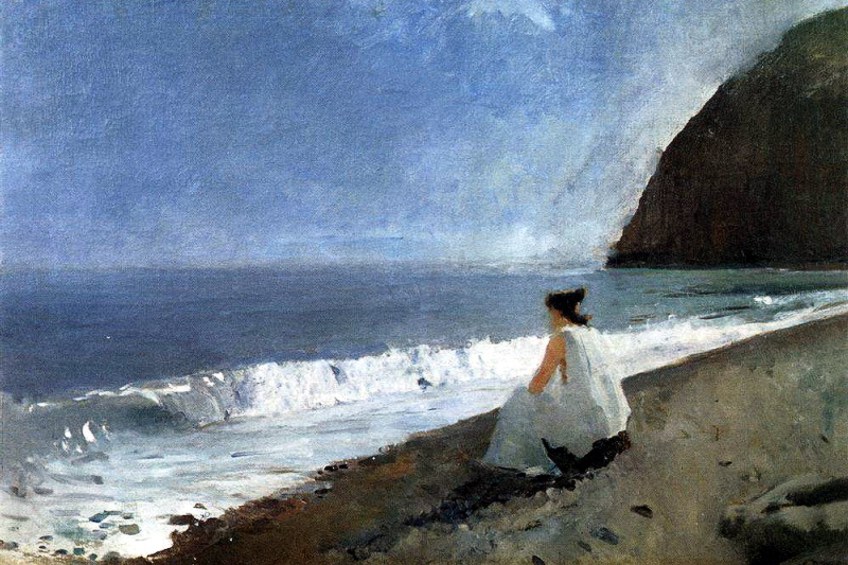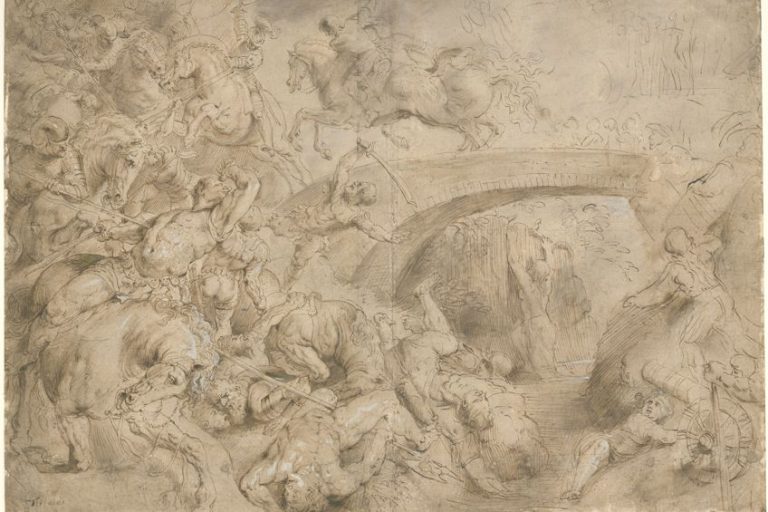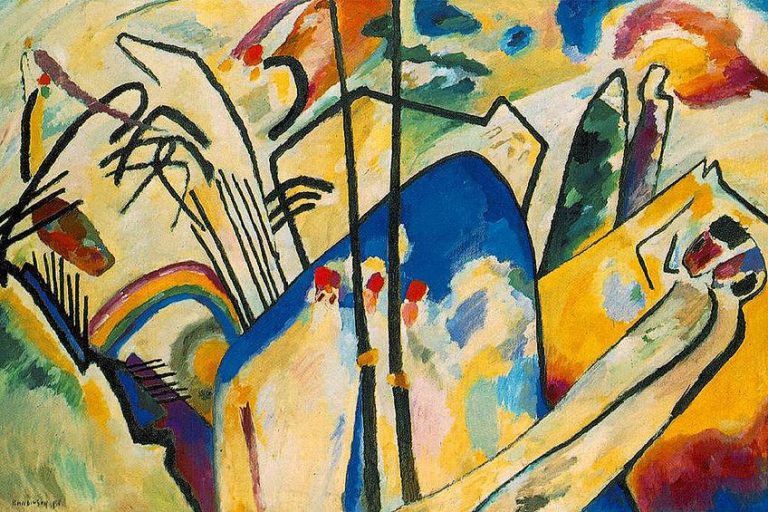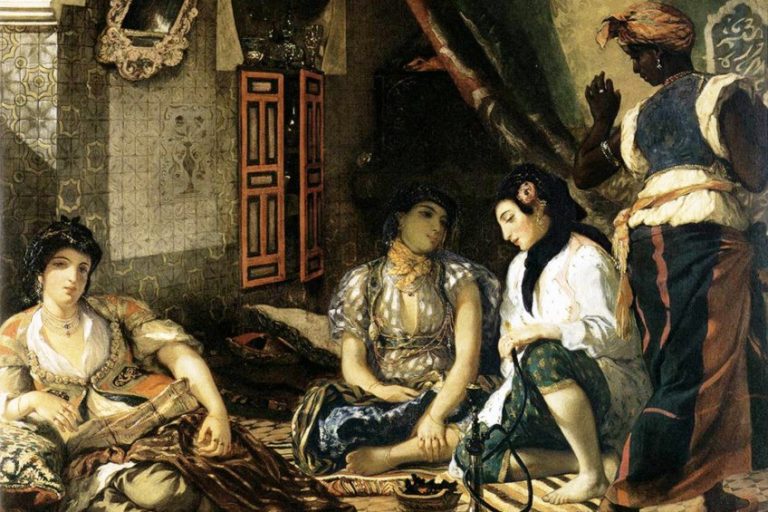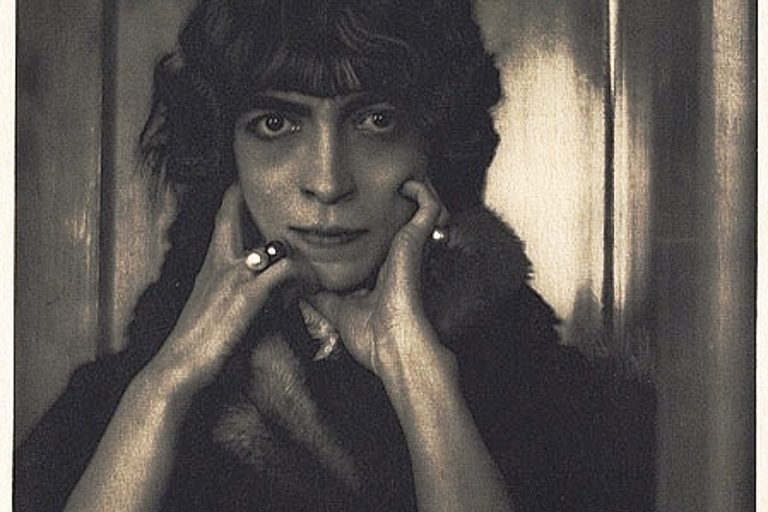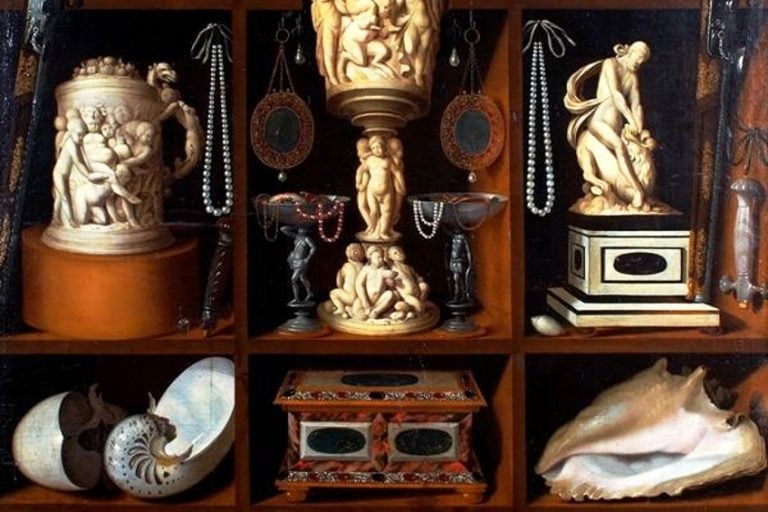Emphasis in Art – Exploring the Use of Visual Emphasis
If you look at any work of art there will always be a focal point or point of emphasis. Utilizing visual emphasis is one of the most important aspects of an artwork. In this article, we will look at Emphasis and its role as one of the principles in art as well as provide a few emphasis art examples.
Table of Contents
What Is Emphasis in Art?
Emphasis in art is one of several principles of art, which are utilized alongside the elements of art. The latter is described as your “visual tools”, they comprise color, form, line, shape, space, texture, and value. It is important to not be confused with the elements and principles of art, the latter of which use the elements to create a unified composition.
The principles comprise balance, contrast, emphasis, harmony, movement, pattern/repetition, proportion, rhythm, scale, unity, and variety. These are also described as a set of “criteria” that assist in analyzing an artwork from an objective standpoint.

That brings us to the question, what is emphasis in art? This principle refers to how various elements are applied to draw our, the viewers, attention to a specific focal point. Usually, there is only one focal point, but there can be several in a composition, as we will see from the emphasis art examples provided below. However, it is encouraged to explore even more examples of emphasis in art in order to understand the myriad of ways this technique can be applied.
There is no one-size-fits-all, and that is what makes this principle so versatile and fun to work with.
How to Use Emphasis in Art
There are several techniques to use to apply emphasis in art, namely, by contrast, convergence, separation or isolation, creation of exception, and subordination. We will briefly explain each one below.
Contrast
Creating a contrast between the subject matter will emphasize the focal point, this can be applied through various elements like color, value, line, or texture, however, most of the art elements can be strategically applied to create emphasis in art.
Color can be used in three ways, namely, “complementary”, although these are opposites on the color wheel, if positioned next to each other it creates emphasis; “isolated” color refers to using one color that draws attention; and “absent” color refers to the exclusion of most colors to emphasize one color.
An example of utilizing contrast can look like a bright yellow umbrella in an otherwise grayed composition. Other examples of Emphasis in visual art include Impression, Sunrise (1872), and Poppy Field (1873) by the Impressionist artist Claude Monet.
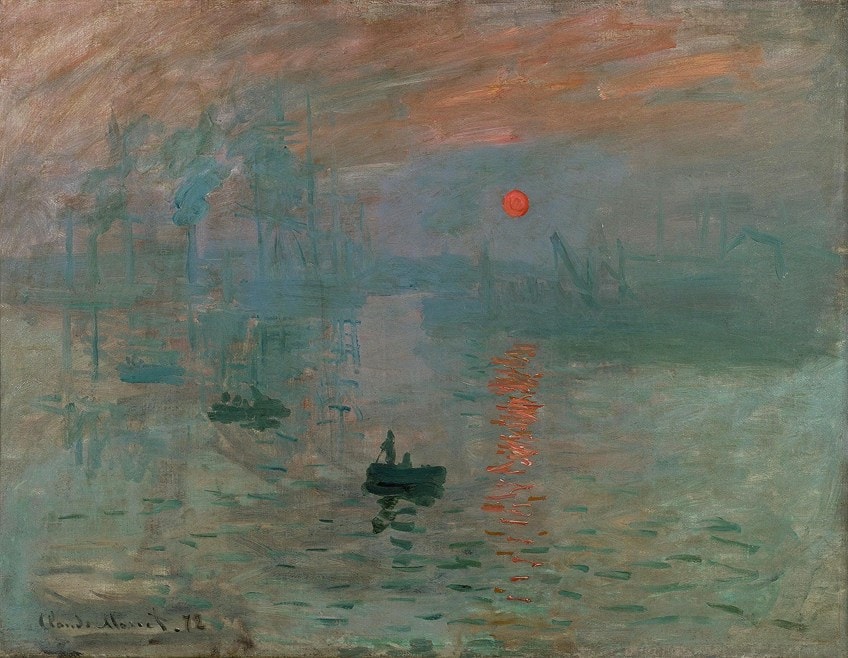
In the emphasis artwork example above, Impression, Sunrise, we see how Monet created contrast through color and the impression of light. Our focus is drawn to the bright orange of the sun, which is also almost right in the center of the composition, and the surrounding colors are muted tones of blues, greens, and grays. In Poppy Field, Monet draws our focus to the field of red poppies to the left-hand side.
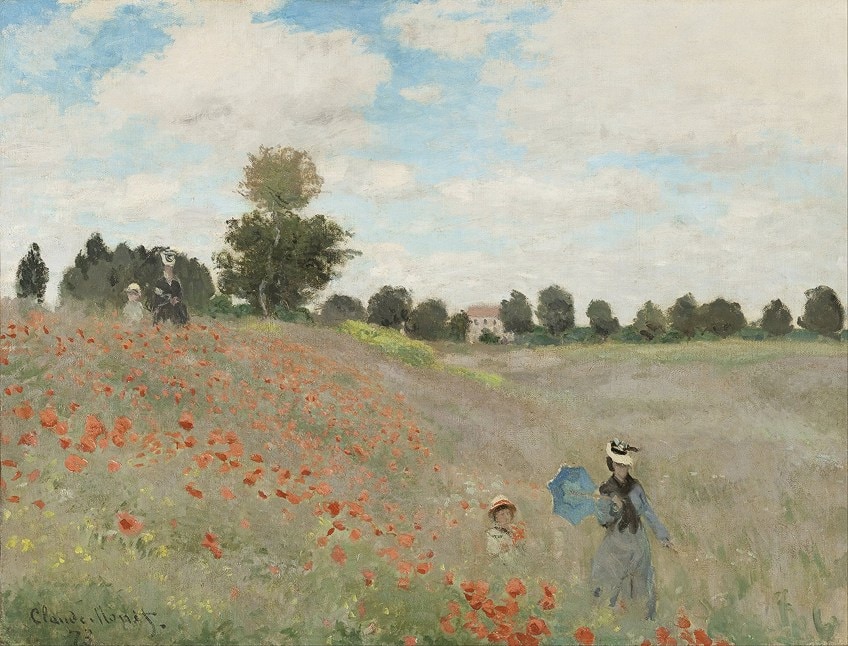
If we look at the Abstract artist Mark Rothko, he created large squares of different colors on canvas, for example, Untitled (Red, Blue, Orange) (1955) or Orange and Yellow (1956). Rothko not only created visual emphasis through his use of contrasting colors on large areas, but he also created emotional emphasis.

Convergence
Convergence refers to using lines to draw attention to a focal point, which is usually termed the “vanishing point”, this is referred to as linear perspective. Lines can have different lengths and curves that are arranged in specific patterns, repetitions, or sequences that move in one direction, leading our gaze to what the composition is emphasizing.
There are also “implied” lines, which simply means there are no distinct lines drawing our attention to a focal point, for example, if a figure looks in a certain direction, our gaze will naturally follow.
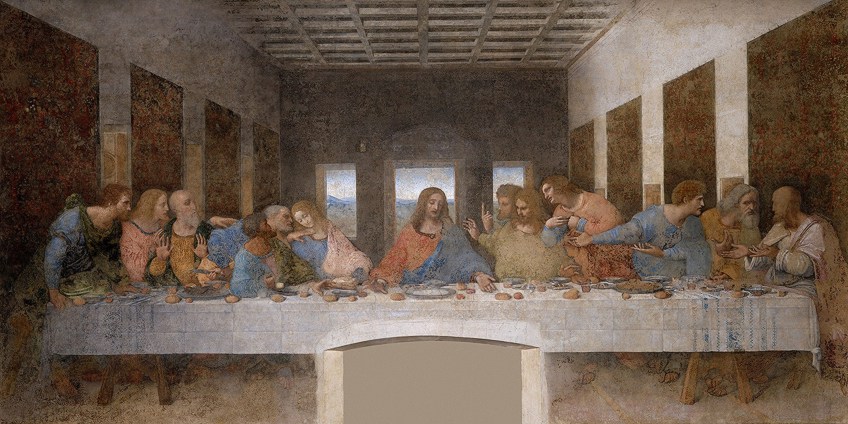
An example of emphasis in art through convergence includes none other than The Last Supper (1495-1498) by Leonardo da Vinci. The Renaissance artist was a master of perspective, and in this painting, he draws our attention to the centralized figure of Jesus Christ, sitting at a table surrounded by the 12 Apostles. Through the convergence of “receding” lines from the surrounding architecture, the walls, ceiling, and three windows in the background, the figure of Christ is emphasized.
This technique is also referred to as one-point perspective, with the vanishing point being the window behind Jesus Christ’s head.
Separation/Isolation
Separation or Isolation refers to the placement of the primary subject matter of artwork as separate from the rest of the subject matter. By isolating the primary object or subject it will draw our attention to it as well as cause us, the viewers, to question its significance and meaning within the greater whole.
Separation or Isolation will single out the main aspects of the artwork.
This can be done by placing a figure away from other figures, or an object, either in the foreground or background or by creating a contrasting effect, where the main subject is smaller than the rest of the subject matter or vice versa.

The emphasis artwork example of this technique includes Cristina’s World (1948) by the American Realist painter Andrew Wyeth. In the foreground we see the solitary female figure with a vast expanse of a grassy field around her, emphasizing her isolation even more, and a house in the distance, which is depicted on a smaller scale, also emphasizing the female figure as the main protagonist of the painting.
Creation of Exception
The word “exception” refers to something that is different than the rest or something that does not follow the accepted rules. For emphasis in art, this will involve depicting the primary subject as different from the rest of the subject matter so that it stands out.
This will often appear strange, out of place, or unnatural, it is also described as “unusual”. Examples can include placing a shape like a triangle among circles or placing a flower in between a pavement street crack in an urban setting.

An example of emphasis in art that uses the creation of exception includes the Surrealist painting The Son of Man (1964) by René Magritte. Here we see the figure of a man wearing an overcoat and a hat, however, what draws our attention is the large green apple covering the man’s face.
Another emphasis artwork example includes the German Expressionist Franz Marc’s painting titled Large Blue Horses (1911), depicting three large blue horses in the foreground of the painting. The blue emphasizes the horses, a color we would not expect for a horse, however, Marc also creates emotional emphasis here through his use of color arrangements.

Subordination
Subordination refers to “de-emphasizing” the subject matter around the primary subject to create emphasis on the focal point. This can be done by utilizing art elements like color and space. For example, the focal point can be in a brighter color than the rest of the foreground can be in sharp focus while the background is blurred.
The element of space can refer to the primary subject placed in the foreground on a larger scale compared to the surrounding subject matter depicted on a smaller scale. Subordination simply creates a distinction between the primary and “secondary” subjects.
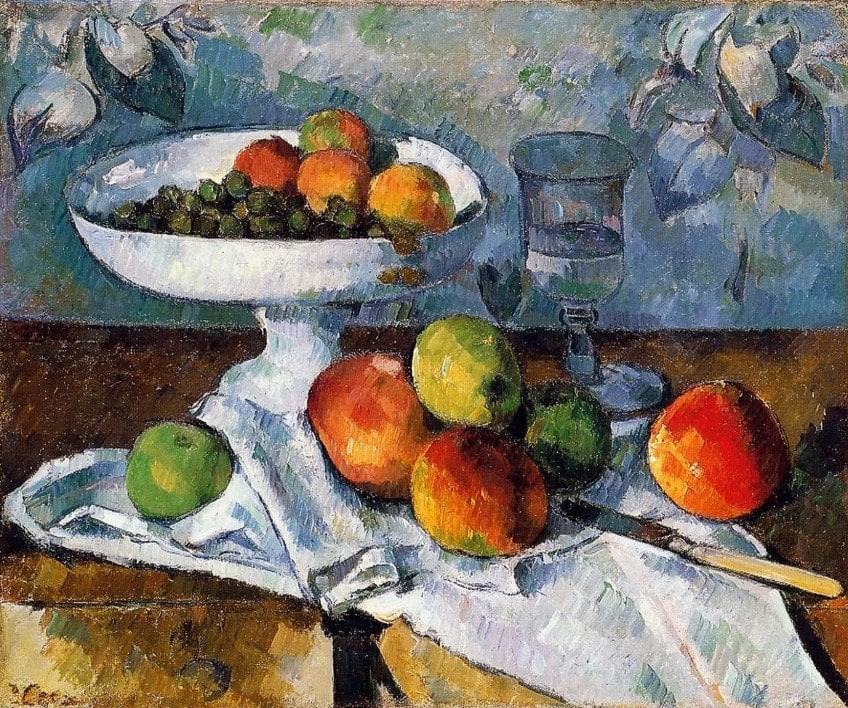
Emphasis art examples of subordination include still lives since their backgrounds are not as meaningful as the forefront, where there are usually baskets with food or similar subject matter. One example includes Still Life with Fruit Dish (1879-1880) by Paul Cézanne.
Another emphasis artwork example is The Third of May 1808 (1814) by Francisco Goya, which is depicted by emphasizing the central figure with his hands up; there is also a light source shining on him, and the other figures are in the shadows, specifically the soldiers, whose backs are towards us, the viewers.
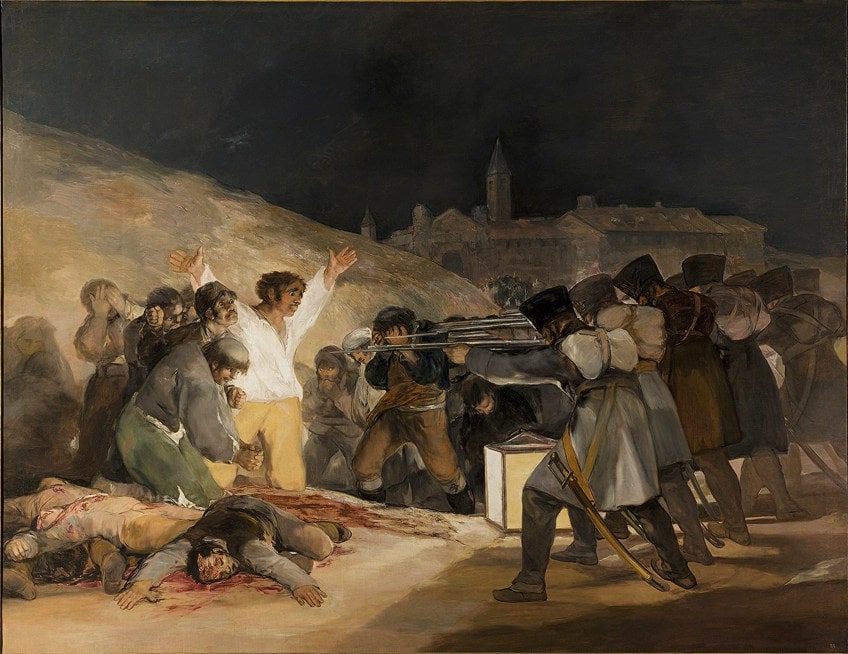
A Summary of Emphasis in Art
| Emphasis in art Techniques | Characteristics | Emphasis Artwork Examples |
| Contrast | To emphasize the focal point in a composition various art elements can be utilized to create a contrasting effect for emphasis. | Impression, Sunrise (1872) by Claude Monet Blue, Orange, Red (1961) by Mark Rothko |
| Convergence | The utilization of lines to draw viewers’ attention to a focal point or to emphasize a focal point. This is termed linear perspective. | The Last Supper (1495 to 1498) by Leonardo da Vinci |
| Separation/Isolation | Refers to the separation or isolation of the main subject to increase the emphasis. | Cristina’s World (1948) by Andrew Wyeth |
| Creation of Exception | The often strange, unnatural, or unusual placement or depiction of the main subject matter to emphasize it or an idea in the composition. | Blue Horses (1911) by Franz Marc |
| Subordination | This refers to “de-emphasizing” the subject matter around the main focal point so as to emphasize it. | Still Life with Fruit Dish (1879 to 1880) by Paul Cézanne |
In this article, we explored how to create emphasis in art, which is one of the several principles of art, combined with the various applications of art elements, we see how artworks can hold many meanings. It is also important to note that it is not only visual emphasis created, but through various art elements, emotional and psychological emphasis is also created, especially when an artist intends to explore the latter aspects in an artwork.
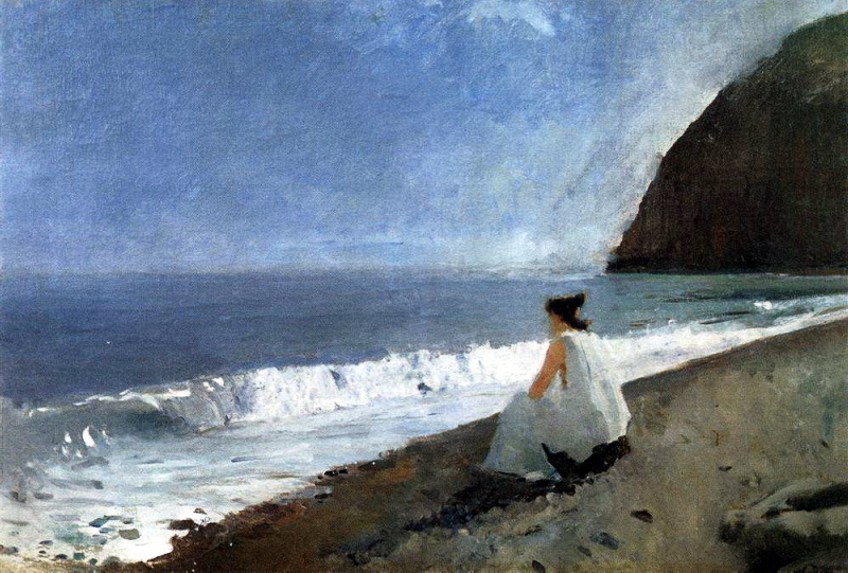
Commonly, what creates emphasis in art is contrast, which can be conveyed in numerous ways, be it through color compositions, textures, size, scale, or space, among others. Other techniques that create emphasis include convergence, separation or isolation, creation of exception, and subordination, techniques portrayed in only a few of the emphasis art examples mentioned above.
Principles of Art – Further Readings
- Principles of Art main article
- Movement in Art
- Unity in Art
- Rhythm in Art
- Texture in Art
- Proportion in Art
- Balance in Art
- Harmony in Art
As we have seen from the examples of emphasis in art above, it is an important principle of art that, without it, we would be staring at a meaningless composition. Utilizing the diversity of tools at our disposable, and strategically applying these, we, as artists, can create meaningful and awe-inspiring artworks. Additionally, understanding how emphasis in art works we are also better equipped to analyze all the important paintings and sculptures from throughout the ages, which will ultimately refine their meaning for us. Therefore, by understanding emphasis, we can speak the language of meaning in art.

Also read our emphasis art web story.
Frequently Asked Questions
What Is Emphasis in Art?
Emphasis in art is part of the principles of art, it is about drawing attention to the main subject matter in the composition through the application of various art elements like color, line, texture, space, shape, form, and value.
What Are Examples of Emphasis in Art?
Emphasis in art can be utilized in different ways, namely through convergence, isolation or separation, creation of exception, subordination, or contrast.
What Are the Principles of Art?
The principles of art are a set of rules or techniques that act as criteria when composing artworks, be it paintings, drawings, or sculptures. These are contrast, variety, harmony, rhythm, scale, balance, movement, pattern or repetition, unity, and emphasis.
Alicia du Plessis is a multidisciplinary writer. She completed her Bachelor of Arts degree, majoring in Art History and Classical Civilization, as well as two Honors, namely, in Art History and Education and Development, at the University of KwaZulu-Natal, South Africa. For her main Honors project in Art History, she explored perceptions of the San Bushmen’s identity and the concept of the “Other”. She has also looked at the use of photography in art and how it has been used to portray people’s lives.
Alicia’s other areas of interest in Art History include the process of writing about Art History and how to analyze paintings. Some of her favorite art movements include Impressionism and German Expressionism. She is yet to complete her Masters in Art History (she would like to do this abroad in Europe) having given it some time to first develop more professional experience with the interest to one day lecture it too.
Alicia has been working for artincontext.com since 2021 as an author and art history expert. She has specialized in painting analysis and is covering most of our painting analysis.
Learn more about Alicia du Plessis and the Art in Context Team.
Cite this Article
Alicia, du Plessis, “Emphasis in Art – Exploring the Use of Visual Emphasis.” Art in Context. March 4, 2022. URL: https://artincontext.org/emphasis-in-art/


